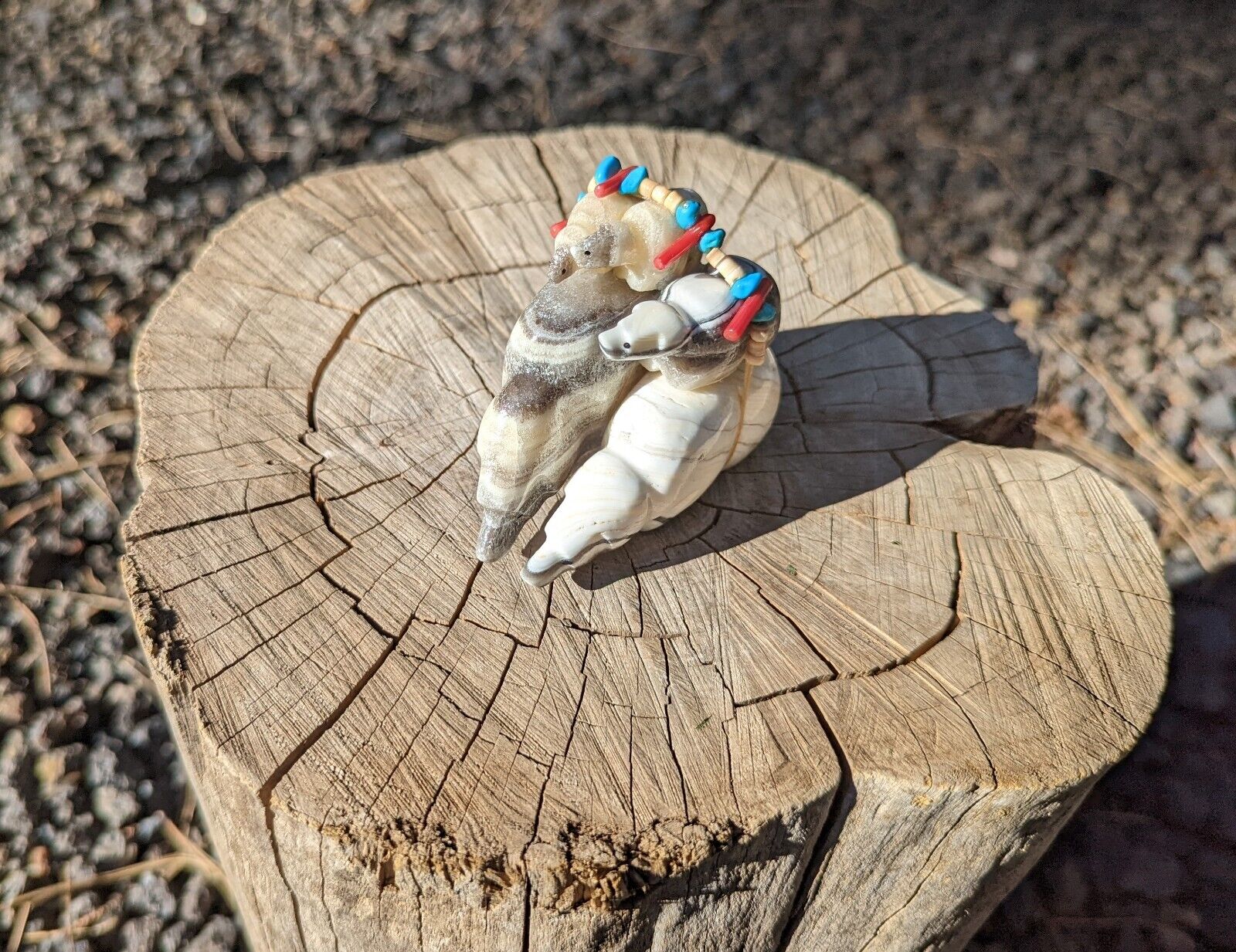-40%
Zuni Fetish Carving BEAR Native American Spirit Animal Totem Signed Lementino
$ 92.4
- Description
- Size Guide
Description
This is a Zuni animal fetish carving made of Agate. Beautiful hand carved "BEAR FAMILY", Which signifies strength, introspection, power of the soul and lightens emotional burdens.This piece of Native American Southwestern art was hand made by Zuni artist Ed Lementino, a member of world-famous family of carvers.
Measures 2.5 inches tall X 2.75 inches long
Zuni fetishes are small carvings made from primarily stone but also shell, fossils, and other materials by the Zuni people. Within the Zuni community, these carvings serve ceremonial purposes for their creators and depict animals and icons integral to their culture. As a form of contemporary Native American art, they are sold with secular intentions to collectors worldwide. Prior to the establishment of a non-Native market for fetishes, Hopi, Navajo, and other Pueblo peoples, especially at Kewa Pueblo also carved and used fetishes.
The primary non-Native source for academic information on Zuni fetishes is the Second Annual Report of the Bureau of Ethnology submitted in 1881 by Frank Hamilton Cushing and posthumously published as Zuni Fetishes in 1966, with several later reprints. Cushing reports that the Zuni divided the world into six regions or directions: north, west, south, east, above, and below. At the center of each region is a great mountain peak that is a very sacred place. Yellow mountain to the north, blue mountain to the west, red mountain to the south, white mountain to the east, the multicolored mountain above, and the black mountain below.
Each direction is represented by a Prey God, or guardian animal, and are listed by Cushing as follows:
north: yellow mountain lion
west: black bear (represented by the color blue),
south: red badger,
east: white wolf,
above or the sky: multicolored eagle,
below or underground: black shrew (often misnamed "mole," but moles do not live in the Southwest)
Each prey god is the “guardian and master” of their region, with the yellow mountain lion being the elder brother of all animals and the master and guardian of all regions. Each one of these regions contains an order of all the guardian animals, but the "guardian and master" of a particular region is the elder brother to all animals of that region. These guardians are considered as having protective and healing powers. They are held by the priests of the medicine orders as if "in captivity" and act as mediators between the priests and the animals they represent.
A second group of fetishes, the Prey Gods of the Hunt, belonging to the Hunter Order, or Society, are given in the “prayer songs of the Sa-ni-a-kia-kwe”. These guardian animals are the same as the original regions with the exception of the coyote, which replaces the bear; and the wildcat (or bobcat), which replaces the red badger. Sa-ni-a-kia is the awakening of the fetish and subsequently the power of the hunter.
In addition to the animals mentioned above, typical Zuni fetishes depict animals such as the wolf, badger, bear, mountain lion, eagle, mole, frog, deer, ram, and others. Contemporary carvers many produce images of exotic subjects – dinosaurs, for example – or some insects and reptiles that are customary but more integral to petroglyphs, symbolism, and the patterns of design in pottery – dragonflies, butterflies, water spiders, and lizards for example.[6] Other animals, such as the horse, were carved in the past mainly for trade. The Zuni was not a horse culture, but their horse carvings were considered by the horse cultures to the north as having great power for the protection of their herds.


















